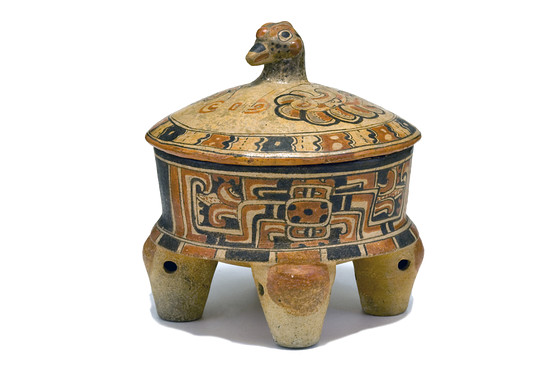Despite its poetic, far-ranging title, "Maya, From Dawn to Twilight" at the Musée du Quai Branly is not an exhaustive exhibit, but a selection of some 150 exceptional works from the National Museum of Archaeology and Ethnology in Guatemala City, many never before shown outside their native land.

At its apogee, Mayan civilization extended over much of southern Mexico and the Yucatan peninsula, Belize, El Salvador and Honduras, with Guatemala in the center. In general, Mayan history is divided into three periods, each with several subcategories: Pre-classic, 2000 B.C.-250 A.D.; Classic, 250 A.D.-1000 A.D.; and Post-classic, the period after the still unexplained collapse of the Mayan city-states, from about 1000 A.D. to the Spanish conquest in 1524.

From the Early Classic period, 250-550 A.D., come a sophisticated urn, a seated figure forming a circle with his fingers, in black ceramic with white incisions; and a large black-and-orange bowl whose cover knob is a spotted jaguar head with fanged jaws wide open and long red tongue protruding, either in attack mode or giving a very impressive yawn.
Recent Classic works (550–800 A.D.) include a small shell-and-jade skeleton figurine, like a medieval memento mori; and a surprising 8-inch tall whistle—a polychrome ceramic figure wearing an elaborate feathered headdress and holding two objects that look like maracas.
Among the show's many pluses: wall texts in English as well as French, and a terrific little video with a quick lesson in Mayan hieroglyphics, in English with French subtitles. One big minus: no photos of Guatemala's Tikal or other monumental ruins to set the scene.
Author: Judy Fayard | Source: The Wall Street Journal [August 26, 2011]